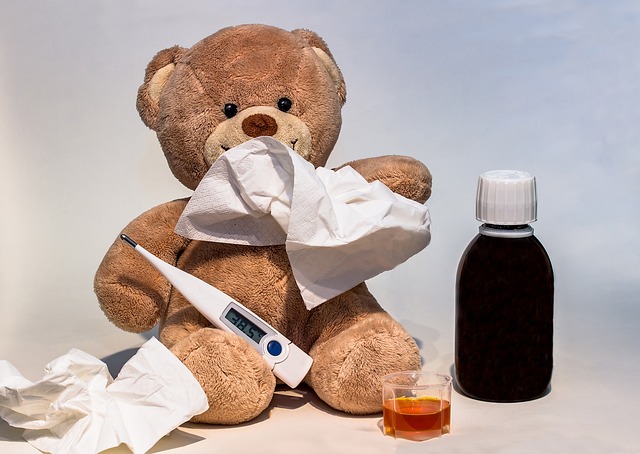Medication-Assisted Treatment (MAT) is a critical component in the addiction recovery process, combining medication, counseling, and therapy to effectively manage withdrawal symptoms and cravings associated with substance use disorders. MAT utilizes FDA-approved medications like methadone, buprenorphine, and naltrexone under medical supervision to stabilize brain chemistry and support recovery. This approach is tailored to individual needs, focusing on both the physical and psychological aspects of addiction. MAT has shifted the treatment paradigm from traditional abstinence-based models to a recognition of medication's role in managing addiction as a chronic disease. It offers personalized care that adapts to each patient's progress, reducing withdrawal discomfort and relapse risk, which is key for sustained sobriety and overall wellbeing. MAT's evidence-based practices contribute to improved recovery outcomes by providing a robust support system throughout the recovery journey.
Medication-Assisted Treatment (MAT) stands as a pivotal pillar in the journey of addiction recovery. This article delves into the multifaceted role of MAT, shedding light on its efficacy and personalized application in addressing substance use disorders. Explore FDA-approved medications that are integral to MAT programs, the integration of these treatments with behavioral health therapies, and the empirical evidence supporting their synergy. We will confront the stigmas surrounding MAT, navigate the legal and ethical landscapes, and present success stories that underscore its transformative impact. Additionally, we’ll examine the challenges in accessing MAT services, discuss the future of this treatment approach, and highlight its role in long-term recovery and relapse prevention. The nuances of MAT for various substances, including opiates and alcohol, will be scrutinized, as will the importance of addressing co-occurring disorders within these programs. Join us as we unravel the intricacies of MAT and its significance in the realm of addiction recovery.
- Understanding Medication-Assisted Treatment (MAT) in Addiction Recovery
- The Role of MAT in Combating Substance Use Disorders
- FDA-Approved Medications Used in MAT Programs
Understanding Medication-Assisted Treatment (MAT) in Addiction Recovery

Medication-Assisted Treatment, commonly abbreviated as MAT, represents a comprehensive approach to addiction recovery that pairs medication with counseling and behavioral therapies. This treatment modality is designed to address the whole person by managing withdrawal symptoms, reducing drug cravings, and blocking the euphoric effects of drugs like opioids or alcohol. The use of FDA-approved medications such as methadone, buprenorphine, and naltrexone under the guidance of healthcare professionals helps individuals maintain treatment engagement and stabilize their lives during recovery. By addressing both the physical and psychological aspects of addiction, MAT significantly improves patient outcomes and supports sustained recovery from substance use disorders. This approach is not a replacement for other forms of addiction treatment but rather a critical component that can aid in long-term recovery efforts, tailored to each individual’s unique needs and circumstances.
In the context of addiction recovery, MAT is pivotal in reshaping how individuals with substance use disorders are treated. It challenges the traditional abstinence-only models by acknowledging that medication can play a role in managing the chronic disease of addiction. Through careful monitoring and adjustment, MAT can be an effective strategy to manage withdrawal symptoms and reduce the risk of relapse. Moreover, it allows patients to focus on their recovery journey without the immediate and overwhelming discomfort associated with withdrawal. By integrating evidence-based practices, MAT provides a solid foundation for individuals seeking to overcome addiction and reclaim their lives, promoting healthier and more sustainable recovery outcomes.
The Role of MAT in Combating Substance Use Disorders

Medication-Assisted Treatment, commonly known as MAT, plays a pivotal role in the recovery journey from substance use disorders. This evidence-based approach combines medications, counseling, and behavioral therapies to manage cravings and withdrawal symptoms, offering a comprehensive strategy to treat individuals struggling with addiction to opioids, alcohol, and other substances. The integration of FDA-approved medications such as methadone, buprenorphine, and naltrexone in MAT helps normalize brain chemistry, block the euphoric effects of opioids, relieve withdrawal symptoms, and reduce drug cravings, which are critical factors in long-term recovery. By addressing the medical aspects of addiction, MAT enables individuals to focus on their mental and emotional healing through counseling and therapy, thereby increasing engagement in treatment and improving treatment outcomes. This holistic approach not only helps in stabilizing patients but also aids in their ability to function normally in their daily lives while in recovery from addiction.
Furthermore, MAT is designed to be adaptable and can be tailored to meet the unique needs of each patient. The flexibility of this treatment modality allows for ongoing assessments and adjustments to medication and therapy as needed. This personalized care is essential for addressing the complex nature of addiction, which often involves underlying psychological or social issues that require specific interventions. MAT’s role in addiction recovery is not only to manage acute symptoms but also to provide sustained support, reducing the risk of relapse and fostering a more stable path toward lasting recovery. The long-term benefits of MAT are evident in its ability to improve patient survival rates and enhance overall wellbeing, making it a critical component of effective addiction treatment.
FDA-Approved Medications Used in MAT Programs

Medication-Assisted Treatment (MAT) plays a pivotal role in addiction recovery by providing a comprehensive approach that integrates medications, counseling, and behavioral therapies to treat substance use disorders. The U.S. Food and Drug Administration (FDA) has approved several medications for use in MAT programs, each targeting different aspects of addiction and withdrawal. Methadone, one of the first FDA-approved treatments, is used primarily for opioid addiction, providing a long-acting opioid that can block the euphoric effects of other opioids while reducing cravings. Buprenorphine, available in various forms including Suboxone, also addresses opioid dependence by binding to opioid receptors without producing the same level of intoxication or withdrawal symptoms, thereby helping patients to regain control over their lives. Naltrexone, provided as a monthly injection under the brand name Vivitrol, is another medication that blocks opioid receptors and can reduce the risk of relapse by diminishing cravings and the effects of opioid use. Additionally, for alcohol use disorder, disulfiram (Antabuse) and acamprosate (Campral) are FDA-approved medications that help prevent relapse by creating an aversive reaction to alcohol consumption and stabilizing the neurotransmitter systems affected by chronic alcohol use, respectively. These MAT components are essential for personalized treatment plans, enhancing the potential for successful addiction recovery by addressing both the physical and psychological aspects of substance dependence.
Medication-Assisted Treatment (MAT) represents a significant advancement in the field of addiction recovery, offering a comprehensive approach that addresses substance use disorders effectively. The article outlined the critical components of MAT, its efficacy in reducing cravings and withdrawal symptoms, and its role as a cornerstone in the recovery process. By examining FDA-approved medications utilized within these programs, it’s evident that MAT is a vital tool in a multifaceted treatment strategy that includes counseling and behavioral therapies. As we continue to research and refine these methods, MAT stands as a promising beacon of hope for individuals seeking recovery from addiction.





Thanks for the useful information on drug rehab and addiction resources on your site. What I would advise people would be to give up the particular mentality that they may use today and be fine later. Like a society all of us tend to make this happen for many things. This includes holidays, furniture, plus items we want. However, you must separate your wants out of the needs. As long as you’re working to fix your addiction you really have to make some sacrifices you can recover.